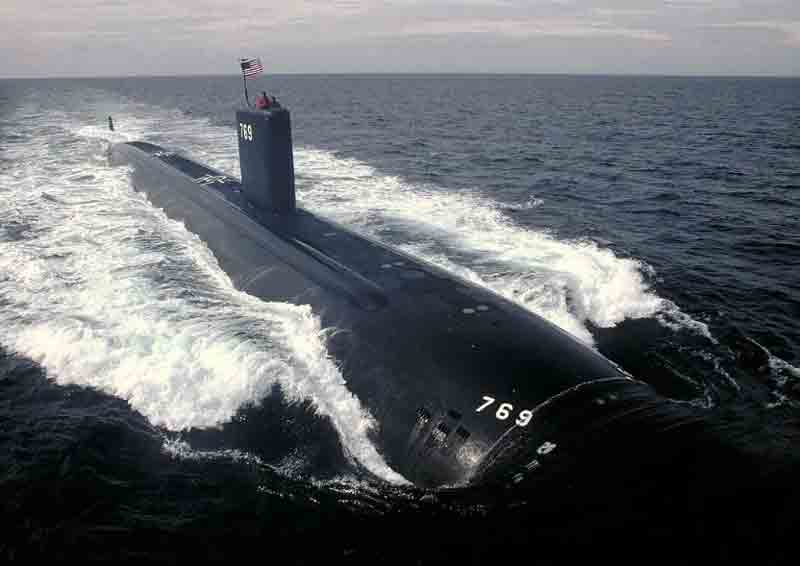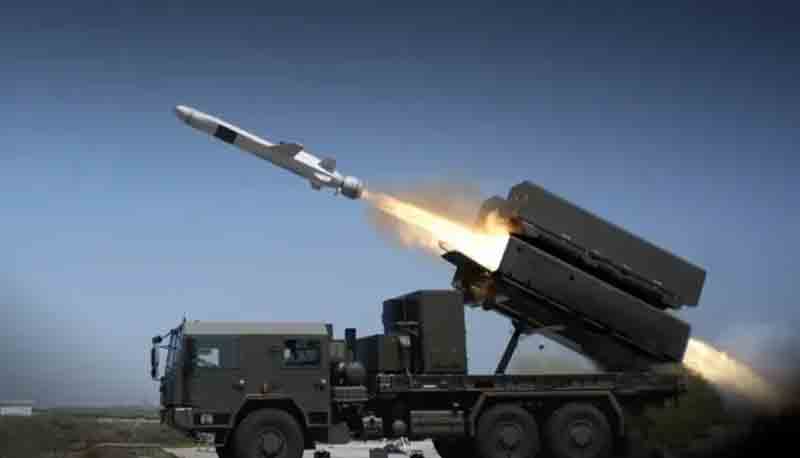The USS Toledo (SSN 769), a highly capable nuclear-powered fast-attack submarine of the United States Navy, has officially resumed operational status after a lengthy and intricate Engineered Overhaul (EOH) at Norfolk Naval Shipyard. This development highlights America’s dedication to maintaining undersea dominance in an ever-changing security environment.
The comprehensive maintenance and modernization effort, which took years and involved millions of man-hours, was essential not only for prolonging the submarine’s service life but also for equipping it to face the growing geopolitical competition for supremacy in the world’s oceans.
The Toledo’s return to service represents more than just a technical achievement; it reinforces the strategic necessity of ensuring the U.S. submarine force retains its combat advantage—an essential element of American maritime power and deterrence. The EOH included extensive refits to both structural and system components, requiring the submarine to be drydocked for a complete overhaul aimed at improving its survivability, stealth, and lethality across various missions.
Captain Jip Mosman, Norfolk Shipyard Commander, expressed gratitude for the exceptional commitment demonstrated by the project team, ship’s crew, and industry partners who worked tirelessly to reach this milestone. Initially planned as a two-year project with an estimated 3.5 million man-hours of work, the overhaul ultimately extended beyond four years, reflecting the complexity and unexpected challenges involved in maintaining an aging yet strategically vital warfighting asset.
The Toledo arrived at Norfolk Naval Shipyard on January 21, 2021, but could not enter drydock until May 1, 2021, due to ongoing repairs at the facility, resulting in significant rescheduling of essential maintenance tasks.
The delays impacted the entire overhaul schedule, challenging logistical flexibility and industrial preparedness, while underscoring the pressure on the United States’ submarine maintenance infrastructure in light of increasing requirements for forward-deployed underwater capabilities. After undergoing one of the Navy’s most rigorous submarine modernization initiatives in recent history, the USS Toledo was officially declared operational on April 19, 2025, rejoining the fleet with enhanced systems, improved structural integrity, and prolonged service life.
In addition to routine repairs, the overhaul incorporated cutting-edge combat systems, advanced electronics, next-generation sensors, and enhancements for platform survivability to maintain operational effectiveness in high-threat and denied-access maritime scenarios.
As part of this modernization effort, the crew underwent refresher training on the newly installed systems to ensure complete mission readiness under operational stress. The Toledo’s return to the fleet represents a crucial advancement in sustaining the combat readiness of the U.S. Navy’s Improved Los Angeles-class submarines, especially as Russia and China continue to expand their naval presence in contested regions such as the Arctic, South China Sea, and North Atlantic.
Commissioned on February 24, 1995, the USS Toledo was specifically designed for multi-mission capabilities within the undersea domain, including anti-submarine warfare, anti-surface engagements, land-attack operations, covert intelligence collection, and support for special operations.
As a member of the Improved Los Angeles-class (688i), Toledo features enhanced acoustic stealth, upgraded sonar and combat systems, and diving planes capable of Arctic operations, setting it apart from earlier 688 models and making it well-suited for operations beneath the ice.
When surfaced, the submarine has a displacement of approximately 6,200 tons, which increases to around 6,900 tons when submerged, highlighting the class’s strong construction and payload capabilities. Measuring 360 feet in length, with a beam of 33 feet and a draft of 32.3 feet, Toledo is powered by a single S6G nuclear reactor that produces steam for two geared turbines, which drive a single shaft and propulsor with an estimated output of 35,000 shaft horsepower.
Although its maximum submerged speed is classified, it is believed that the vessel can achieve flank speeds exceeding 30 knots, allowing for swift maneuverability in vast maritime areas. Its nuclear propulsion system provides virtually unlimited range, enabling the submarine to remain submerged for up to 90 days, with operational constraints determined solely by crew endurance and onboard supplies.
With a certified test depth of over 800 feet and a likely actual maximum depth exceeding 1,000 feet, Toledo can operate in deep-ocean environments that are inaccessible to most rival navies, greatly enhancing its survivability and mission adaptability. The submarine is operated by a highly skilled crew of 147 personnel, including 18 officers and 129 enlisted sailors, forming a cohesive warfighting unit capable of conducting high-intensity undersea operations.
Toledo is outfitted with four bow-mounted 21-inch torpedo tubes, allowing it to launch Mk-48 ADCAP torpedoes for both anti-submarine and anti-surface warfare with deadly accuracy.
The platform can be set up to launch UGM-84 Harpoon anti-ship missiles and BGM-109 Tomahawk cruise missiles, enabling standoff land-attack capabilities from both torpedo tubes and, in certain models, 12 vertical launch system (VLS) cells. It has a total weapons capacity of 26 to 30 warloads, which includes torpedoes, missiles, and sea mines, allowing for extensive mission customization for conventional deterrence and area-denial operations.
The sensor systems feature the AN/BQQ-5 or AN/BQQ-10 sonar suite with active/passive arrays, AN/BQR-19 for high-frequency navigation and surfacing, and a towed array sonar for long-range submarine detection. The AN/BSY-1 integrated sonar and combat system improves fire control accuracy, while the AN/WLR-8 radar warning receiver and acoustic decoy systems enhance survivability in contested electromagnetic environments.
Toledo navigates using an inertial guidance system supported by GPS when surfaced and utilizes traditional periscopes along with photonic masts for stealthy visual surveillance. Designed with retractable bow planes for maneuvering under ice, the submarine can also accommodate Dry Deck Shelters, facilitating covert deployment of SEAL teams or unmanned undersea vehicles (UUVs).
Its anechoic coating and machinery isolation systems significantly lower its acoustic signature, making it nearly undetectable to enemy sonar—crucial for operating in hostile waters without being noticed.
The Toledo’s significance stems from its unparalleled blend of stealth, range, endurance, and versatility in missions, establishing it as a fundamental element of America’s global undersea strategy. Equipped with the Mk-48 ADCAP torpedo and AN/BSY-1 system, it is crucial for protecting carrier strike groups and ensuring maritime dominance in multi-domain operations.
In its land-attack capacity, the Tomahawk missile system has proven its effectiveness, as demonstrated when Toledo launched cruise missiles during Operation Iraqi Freedom in 2003, successfully targeting enemy command and control centers. Its intelligence, surveillance, and reconnaissance (ISR) capabilities were notably showcased during a 2019 deployment in the U.S. European Command’s operational area, earning a Navy Unit Commendation for executing unprecedented intelligence missions and enhancing NATO collaboration through joint anti-submarine warfare exercises.
Toledo is also capable of deploying special operations forces and unmanned underwater vehicles (UUVs) for unconventional warfare, strategically mining critical chokepoints, and delivering impactful results far exceeding its size through stealthy maneuvers and precise strikes.
With its nuclear propulsion and varied payloads, it supports extended global missions, including significant operations in the Mediterranean (1997–1998), assistance during Operation Enduring Freedom (2001–2002), strikes in Iraq (2003), and intelligence activities in the Eastern Atlantic (2019).
Whether operating autonomously or in conjunction with carrier groups, Toledo ensures a continuous U.S. presence in contested areas, providing reassurance to allies and deterring potential threats through credible undersea force projection.
Although it lacks nuclear ballistic missiles, the Tomahawk cruise missile capability provides a formidable conventional deterrent, threatening enemy infrastructure without escalating to strategic conflict. Its capacity to operate undetected in enemy coastal areas offers commanders vital intelligence and preemptive strike options during crises, enhancing the strategic significance of U.S. undersea doctrine. Enhancements made during the 2006–2009 Depot Modernization and the 2025 Engineered Overhaul have ensured the submarine remains at the forefront of lethality and survivability, incorporating the latest advancements in combat systems, sonar technology, and structural fortification.
The Combat Systems Department coordinates sonar, fire control, torpedo, and deck divisions to ensure smooth operational effectiveness in combat situations. During the Kursk submarine incident in 2000, Toledo was actively monitoring Russian naval movements in the Barents Sea, and despite Moscow’s assertions of a collision, U.S. seismic data and the submarine’s operational status validated its integrity, showcasing its stealth and resilience in high-stakes environments.
In 2019, Toledo reaffirmed its strategic importance through rapid-deployment ISR missions, receiving high praise and bolstering NATO’s undersea capabilities through effective multinational cooperation.
As the global undersea environment becomes increasingly competitive, the USS Toledo exemplifies America’s steadfast dedication to maritime supremacy through silent strength, strategic reach, and unwavering preparedness.
Discover more from Defence Talks | Defense News Hub, Military Updates, Security Insights
Subscribe to get the latest posts sent to your email.





